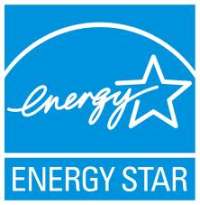How do you interpret the air conditioner ratings provided by the manufacturers of the equipment that you are comparing? If you are looking for a heat pump or air conditioner unit for your house or office, you may want to do a little bit of homework before going to the shops and purchase the unit.
Getting a suitable equipment that will usually last you for many years is essential as there is a trade off between the initial price and the operating cost over the years.
A good unit that comes with energy saving feature such as inverter control of the compressor is higher cost compared to the normal ON/OFF compressor. This is because the electronic control is very much more complicated and contributes substantially to the cost of the unit. However, the energy efficient unit will save you energy hence your utility bill.
If you add up the savings over the years, you will in fact gain more savings even though your initial investment is higher. Therefore, house owners will usually be willing to pay more for better and efficient unit. Look out for Energy Star or equivalent logo on the equipment.
Air Conditioner Ratings & Typical Specifications
Here are some of the air conditioner ratings you may encounter in the brochures or specifications of the air conditioner or heat pump unit.
1. Capacity
This is the most basic specifications that you should look out for. In ductless split, the range of cooling capacity can go from 9,000 Btu/h to over 30,000 Btu/h. The amount of cooling needed by the space will be used to determine the capacity of the air conditioner needed.
2. COP(Coefficient of Performance)
This coefficient is the ratio of the cooling capacity(W) versus power consumption(W).
COP= Cooling Capacity(W)/Power Consumption(W)
The higher the COP, the higher the efficiency of the air conditioner. Usually the value range from 2-4 but in recent years, the use of inverter compressors have enabled this coefficient to go higher than 4. This formula is also applicable for the heat pump system. See the explanation on heat pump COP.
If the cooling capacity is given in Btu/h, you can convert it to Watt by dividing it with 3.412.
1W= 3.4121 Btu/h
3. EER (Energy Efficiency Ratio)
This rating was established by ARI or Air Conditioning and Refrigeration Institute in 1975 for manufacturers to rate their equipment so that consumers or consultants can tell the cooling efficiency of the air conditioner by just looking at the specifications provided.
This rating is obtained by dividing the cooling capacity(Btu/h) with the input power(Watt). The rating points are at 80 °F dry bulb/67 °F wet bulb indoor temperature and 95 °F dry bulb/75 °F wet bulb outdoor temperatures.
For instance, if you look at the brochure and the unit has a Cooling Capacity = 25,000 Btu/h and Input Power = 2,400 W,
EER = (25,000 Btu/h)/2400W
= 10.42
The larger the value of EER, the more efficient the air conditioner is. Therefore, choose a bigger EER if you are comparing between two equipment.
The EER has a limitation in that it is measured only when the unit is in steady-state condition. The starting up and shutdown cycles are not included in the calculation.
Therefore, this rating does not give a complete picture of the efficiency of the unit. A better efficiency ratio known as Seasonal Energy Efficiency Ratio or SEER is developed.
Choose wisely these air conditioner ratings as the efficiency of the unit will drop as the unit aged over the years.
The Energy Star Logo
4. SEER (Seasonal Energy Efficiency Ratio)
This ratio is rated by AHRI (Air Conditioning, Heating and Refrigeration Institute) and manufacturers’ equipment ratings are published in their catalogs. This ratio is more accurate as it takes into consideration non steady state conditions such as the start-up and shutdown cycles of the air conditioner.
All central split-cooling system produced in the US must have this ratio effective Jan 23, 2006. In order to ensure more efficient units are produced, a minimum SEER of 13 has been stipulated except for window units which has a minimum SEER of 10.
In choosing the SEER, the choice is always to go for a higher SEER as it is a more efficient equipment. The trade-off in choosing a higher SEER is that usually the initial cost of the equipment will be higher.
This ratio is obtained by dividing the total cooling that the equipment is able to provide over the entire season (Btu) over the total energy in Watt-hours it will consume (Wh).
5. HSPF (Heating Seasonal Performance Factor)
This ratio is used to determine the efficiency of air source heat pumps equipment.
It applies to the heating mode by which the total heating used during the entire season is divided by the energy in Watt-hours that it consumed.
A ratio of greater than 8 is considered an efficient equipment. However, the advancement of better control and inverter compressor have enabled units to have HSPF up to 13.
You will see this figure moving upwards as newer design is being developed.
For example, a ductless split unit heat pump delivering 100,000,000 Btu during the entire season and consuming 12,000 kWh will have a HSPF of:
HSPF = 100,000,000 Btu/12,000 kWh
= 8.33
The higher the HSPF, the better the unit is.
6. Noise or Sound Level
In ductless split unit, there is an indoor and outdoor unit. The specifications will state the noise level of both the indoor (evaporator) and outdoor (condenser). The lower the dBA value, the quieter it is. Hence, if you are installing a unit in the study room, choose a lower dB level.
The evaporator is always quieter than the condenser unit. Depending on the capacity, the indoor noise level can go down to below 21 dBA and the outdoor unit can go higher than 50 dBA. Higher capacity equipment will have higher sound levels compared to a lower capacity equipment.
7. Refrigerant
The refrigerant used will also determine the pricing of the unit. For example, R22 will be phased out soon whereas R410A is the more ozone friendly refrigerant.
The cost of the newer refrigerant is more costly but you will be helping to reduce the amount of gas that is harmful to the ozone from being used. Ask the dealer on the refrigerant used and get their advice on future replacement and service.
8. Energy Star
Look out for Energy Star rating of the equipment. An equipment with this rating shows that the equipment is designed to save energy hence reducing your electricity bills as well as protecting our environment.
Units that are qualified for Energy Star ratings are listed in the official website. See the Energy Star air conditioner ratings here.
See also “How to choose energy an efficient air conditioner equipment?”
2023 Efficiency Requirements for residential central AC and heat pumps
The minimum efficiency standards for residential central air conditioning and air-sourced heat pump systems sold in the United States will be increased effective Jan 1, 2023. The figure below from US Energy Information Administration shows that the last increase was in 2015.
Manufacturers and building owners will have to take note of this new requirements as it will affect how the equipment are being developed and produced. The new costs involved will also have to be taken into consideration.

The minimum SEER effective Jan 1, 2023 for the equipment mentioned:
- 14 SEER for residential systems in the northern part of the United States. Current minimum is 13 SEER.
- 15 SEER for the southern part of the United States. Current minimum is 14 SEER.
The minimum HSPF effective Jan 1, 2023 for the equipment mentioned will be 8.8 HSPF compared to 8.2 HSPF.
Whether you require installation, repair, or maintenance, our technicians will assist you with top-quality service at any time of the day or night. Take comfort in knowing your indoor air quality is the best it can be with MOE heating & cooling services Ontario's solution for heating, air conditioning, and ventilation that’s cooler than the rest.
Contact us to schedule a visit. Our qualified team of technicians, are always ready to help you and guide you for heating and cooling issues. Weather you want to replace an old furnace or install a brand new air conditioner, we are here to help you. Our main office is at Kitchener but we can service most of Ontario's cities
Source link



Add Comment